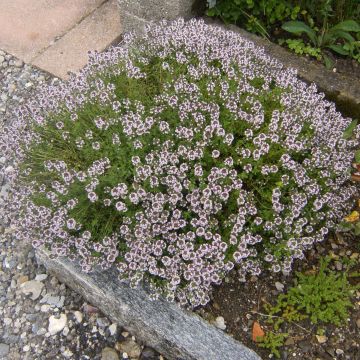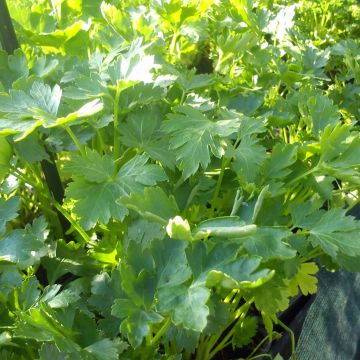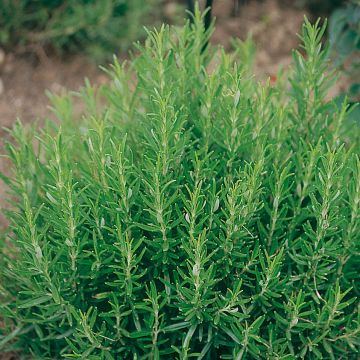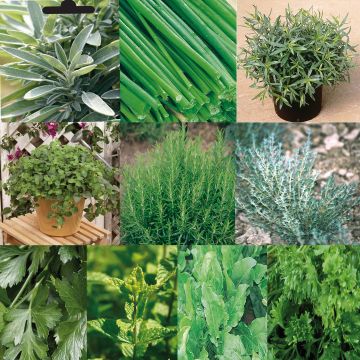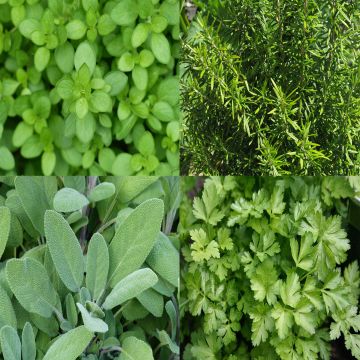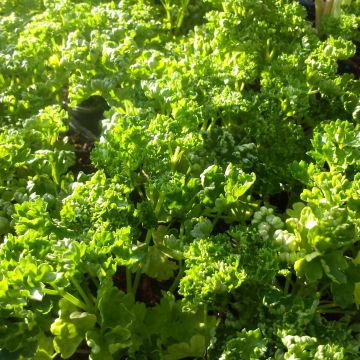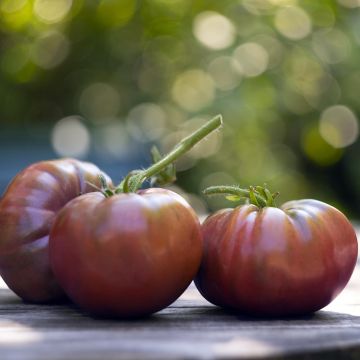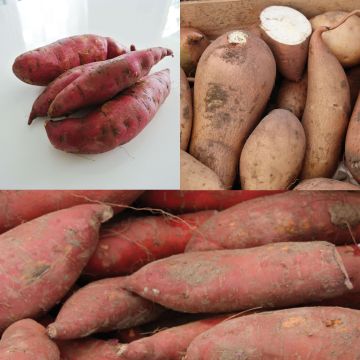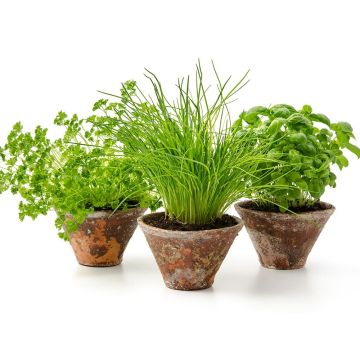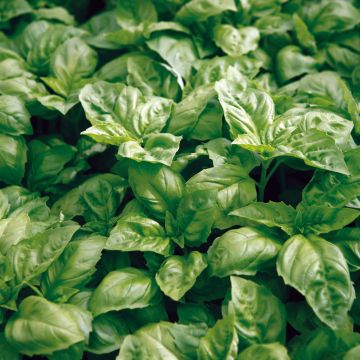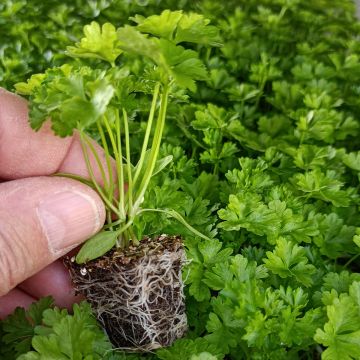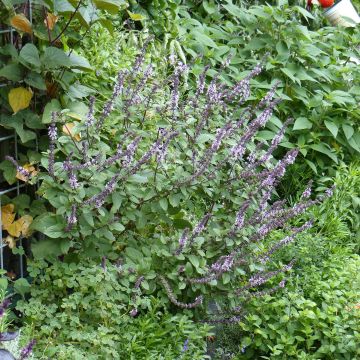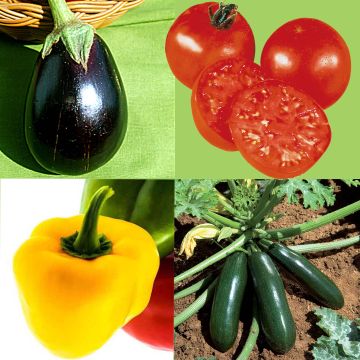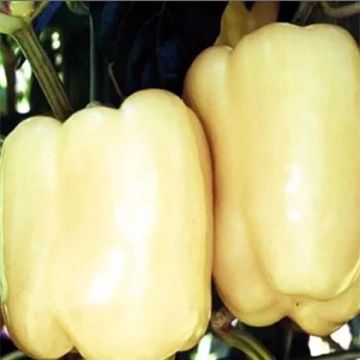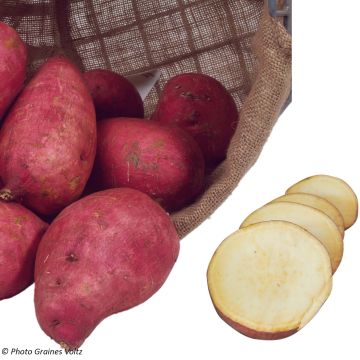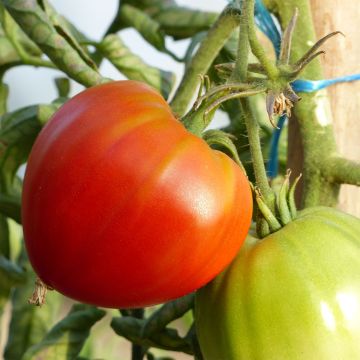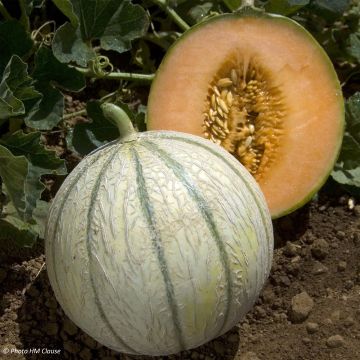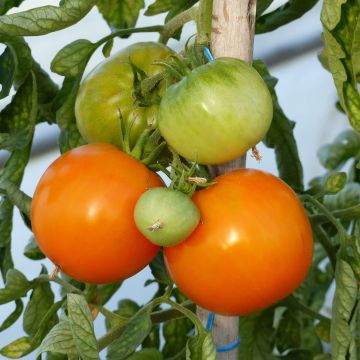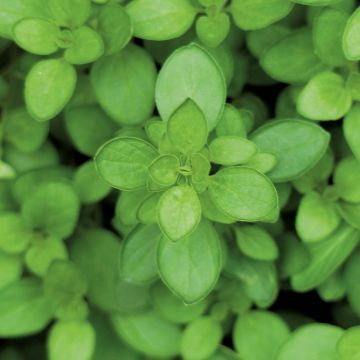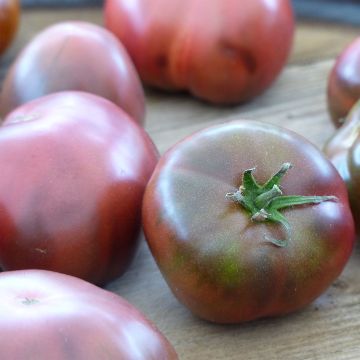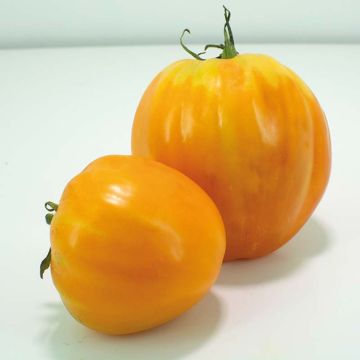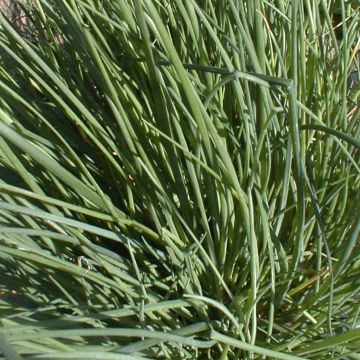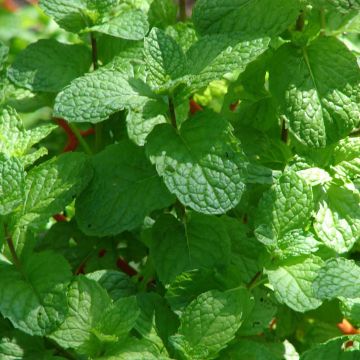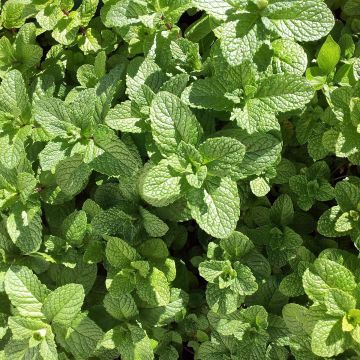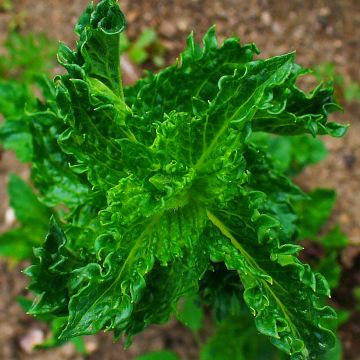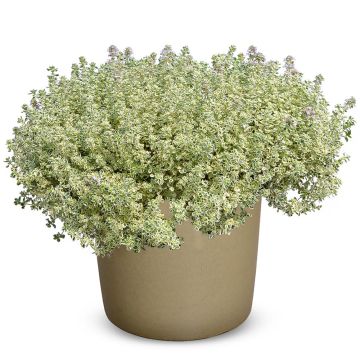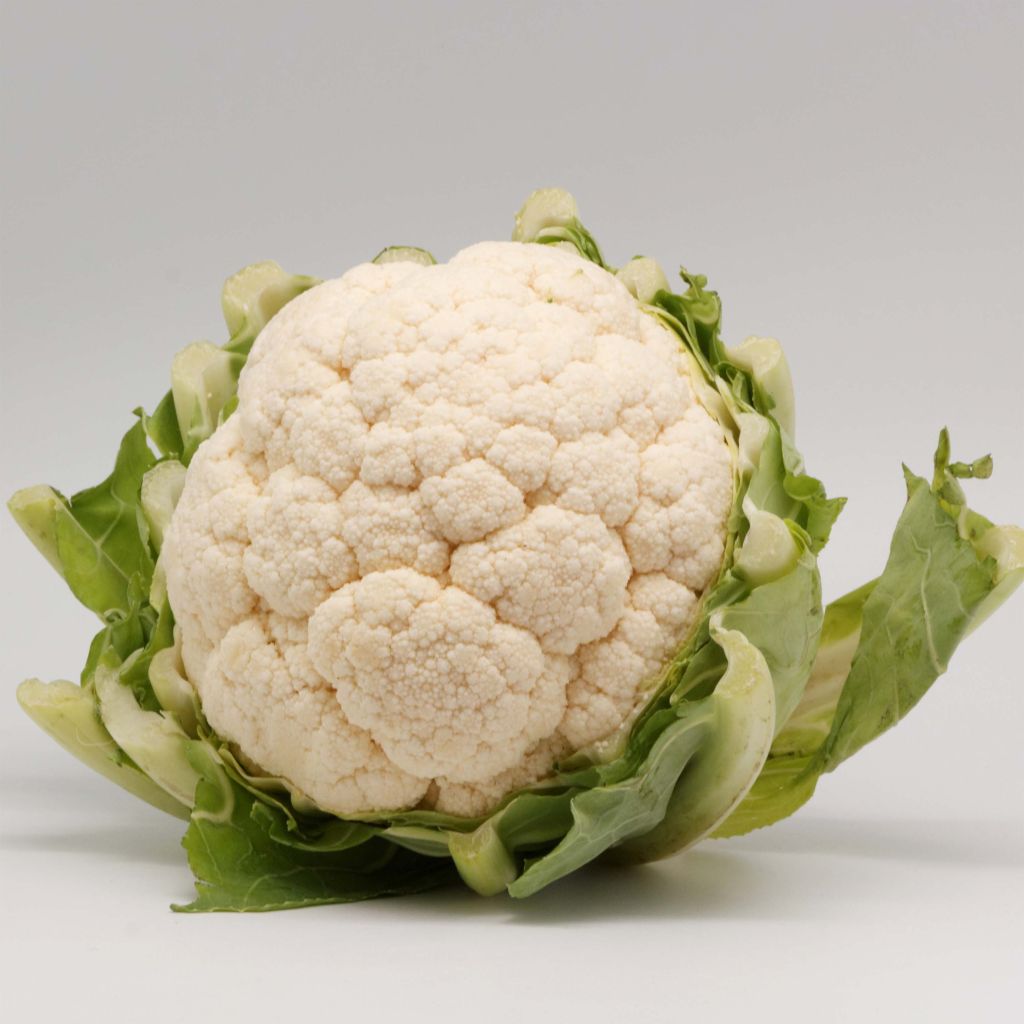

Cauliflower Thabor plugs - Brassica oleracea
Cauliflower Thabor plugs - Brassica oleracea
Brassica oleracea Thabor
Cauliflower
Well-rooted and well-protected mini plugs in their blister. Planting in the vegetable garden with a good mulch. Waiting for recovery and the next harvest.
Nathalie, 12/04/2021
Why not try an alternative variety in stock?
View all →This plant carries a 6 months recovery warranty
More information
We guarantee the quality of our plants for a full growing cycle, and will replace at our expense any plant that fails to recover under normal climatic and planting conditions.
From €5.90 for pickup delivery and €6.90 for home delivery
Express home delivery from €8.90.
Delivery to Corse prohibited: UE law prohibits the import of this plant from mainland France to Corse as part of the fight against Xylella fastidiosa. Please accept our sincere apologies.
More information
Description
The Thabor cauliflower is a hybrid variety for summer and autumn harvest that offers good yields. It is an early variety, which produces beautiful white and firm heads, to be consumed raw with an appetizer sauce or with vinaigrette, or cooked, in gratins or with a béchamel sauce. The mottes of the Thabor Cauliflower are planted from April to August for a harvest from June to October.
The Cauliflower is a vegetable plant cultivated for its inflorescence, more precisely for its pre-floral organ. Depending on the varieties, the heads are generally white but can sometimes be colored: yellow, purple... The Broccoli cauliflower belongs to the large family of Brassicaceae (formerly Cruciferae), like other Cabbages: Broccoli, Brussels sprouts, Smooth-leaved cabbage (or Flat cabbage), Savoy cabbage, Green cabbage or Curly cabbage, Kohlrabi, Chinese cabbage... The Cauliflower bears the Latin name Brassica oleracea botrytis.
Originally from Europe, this sweet-flavored cabbage is one of the most consumed Cabbages as it lends itself to many preparations. It can be consumed raw, with an appetizer sauce or with vinaigrette, as well as cooked, in gratin or with a béchamel sauce. It is a low-calorie vegetable, rich in vitamins B and C, fiber, and minerals.
Like almost all cabbages (except Brussels sprouts), Cauliflower is a demanding vegetable. It requires excellent basal fertilisation and regular moisture.
Harvest: The Cauliflower is harvested by cutting it close to the ground when the head is firm. The harvest of this variety takes place from June to October.
Storage: It is preferable to consume the Cauliflower quickly after harvest as it does not keep well, only a few days in the refrigerator. You can also freeze it after blanching it for 3 minutes in salted boiling water.
Gardener's tip: For the past few years, the Cabbage Midge (Contarinia nasturtii), a small winged piercing and sucking fly, has been causing havoc on Cauliflowers in certain regions like Brittany. We recommend opting for prevention by installing a waterproof insect-proof net over market arches throughout the flight period, from mid-May to mid-July. These nets are easy to set up and reusable to protect, for example, your carrot and leek crops.
Report an error about the product description
Harvest
Plant habit
Foliage
Other Vegetable plants A to Z
Planting and care
Cauliflower is a demanding vegetable that requires well-fertilized soil rich in nitrogen and potassium. It is advisable to apply a generous amount of mature compost (about 3/4 kg per m2) in the autumn by raking it into the soil to a depth of 5 cm (2in), after having loosened the soil as you would for any vegetable crop.
Planting: This variety can be planted from April to August for a harvest from June to October.
To begin with, allow the plug plants to grow by transplanting them into trays or pots with a diameter of 8 to 13 cm (3 to 5in) filled with compost. Place them in a warm and bright location. Water regularly.
For planting in open ground, choose a sunny location (or semi-shade if your summers are very hot). Space the plants 60 cm (24in) apart in all directions. Soak the root ball in water for a few moments before planting. Dig a hole, place the plant and cover with fine soil. Water thoroughly.
At the beginning of the growing season, it is recommended to mound up soil around the base of the Cabbages to provide better anchorage in the soil and promote root development.
To reduce the need for watering, we recommend mulching the soil with thin successive layers of grass clippings, ideally mixed with dead leaves.
During the growing season, water moderately but regularly.
When the heads are sufficiently formed, cover them with the inner leaves to maintain their whiteness.
Cauliflower, like all cabbage plants, is quite susceptible to diseases such as Clubroot and pests (Cabbage White Butterfly, Cabbage Fly, Flea Beetle, Onion Fly...). It is very important, for this crop, to rotate crops.
Cultivation
Care
Intended location
-
, onOrder confirmed
Reply from on Promesse de fleurs
Vegetable plants
Haven't found what you were looking for?
Hardiness is the lowest winter temperature a plant can endure without suffering serious damage or even dying. However, hardiness is affected by location (a sheltered area, such as a patio), protection (winter cover) and soil type (hardiness is improved by well-drained soil).

Photo Sharing Terms & Conditions
In order to encourage gardeners to interact and share their experiences, Promesse de fleurs offers various media enabling content to be uploaded onto its Site - in particular via the ‘Photo sharing’ module.
The User agrees to refrain from:
- Posting any content that is illegal, prejudicial, insulting, racist, inciteful to hatred, revisionist, contrary to public decency, that infringes on privacy or on the privacy rights of third parties, in particular the publicity rights of persons and goods, intellectual property rights, or the right to privacy.
- Submitting content on behalf of a third party;
- Impersonate the identity of a third party and/or publish any personal information about a third party;
In general, the User undertakes to refrain from any unethical behaviour.
All Content (in particular text, comments, files, images, photos, videos, creative works, etc.), which may be subject to property or intellectual property rights, image or other private rights, shall remain the property of the User, subject to the limited rights granted by the terms of the licence granted by Promesse de fleurs as stated below. Users are at liberty to publish or not to publish such Content on the Site, notably via the ‘Photo Sharing’ facility, and accept that this Content shall be made public and freely accessible, notably on the Internet.
Users further acknowledge, undertake to have ,and guarantee that they hold all necessary rights and permissions to publish such material on the Site, in particular with regard to the legislation in force pertaining to any privacy, property, intellectual property, image, or contractual rights, or rights of any other nature. By publishing such Content on the Site, Users acknowledge accepting full liability as publishers of the Content within the meaning of the law, and grant Promesse de fleurs, free of charge, an inclusive, worldwide licence for the said Content for the entire duration of its publication, including all reproduction, representation, up/downloading, displaying, performing, transmission, and storage rights.
Users also grant permission for their name to be linked to the Content and accept that this link may not always be made available.
By engaging in posting material, Users consent to their Content becoming automatically accessible on the Internet, in particular on other sites and/or blogs and/or web pages of the Promesse de fleurs site, including in particular social pages and the Promesse de fleurs catalogue.
Users may secure the removal of entrusted content free of charge by issuing a simple request via our contact form.
The flowering period indicated on our website applies to countries and regions located in USDA zone 8 (France, the United Kingdom, Ireland, the Netherlands, etc.)
It will vary according to where you live:
- In zones 9 to 10 (Italy, Spain, Greece, etc.), flowering will occur about 2 to 4 weeks earlier.
- In zones 6 to 7 (Germany, Poland, Slovenia, and lower mountainous regions), flowering will be delayed by 2 to 3 weeks.
- In zone 5 (Central Europe, Scandinavia), blooming will be delayed by 3 to 5 weeks.
In temperate climates, pruning of spring-flowering shrubs (forsythia, spireas, etc.) should be done just after flowering.
Pruning of summer-flowering shrubs (Indian Lilac, Perovskia, etc.) can be done in winter or spring.
In cold regions as well as with frost-sensitive plants, avoid pruning too early when severe frosts may still occur.
The planting period indicated on our website applies to countries and regions located in USDA zone 8 (France, United Kingdom, Ireland, Netherlands).
It will vary according to where you live:
- In Mediterranean zones (Marseille, Madrid, Milan, etc.), autumn and winter are the best planting periods.
- In continental zones (Strasbourg, Munich, Vienna, etc.), delay planting by 2 to 3 weeks in spring and bring it forward by 2 to 4 weeks in autumn.
- In mountainous regions (the Alps, Pyrenees, Carpathians, etc.), it is best to plant in late spring (May-June) or late summer (August-September).
The harvesting period indicated on our website applies to countries and regions in USDA zone 8 (France, England, Ireland, the Netherlands).
In colder areas (Scandinavia, Poland, Austria...) fruit and vegetable harvests are likely to be delayed by 3-4 weeks.
In warmer areas (Italy, Spain, Greece, etc.), harvesting will probably take place earlier, depending on weather conditions.
The sowing periods indicated on our website apply to countries and regions within USDA Zone 8 (France, UK, Ireland, Netherlands).
In colder areas (Scandinavia, Poland, Austria...), delay any outdoor sowing by 3-4 weeks, or sow under glass.
In warmer climes (Italy, Spain, Greece, etc.), bring outdoor sowing forward by a few weeks.

































